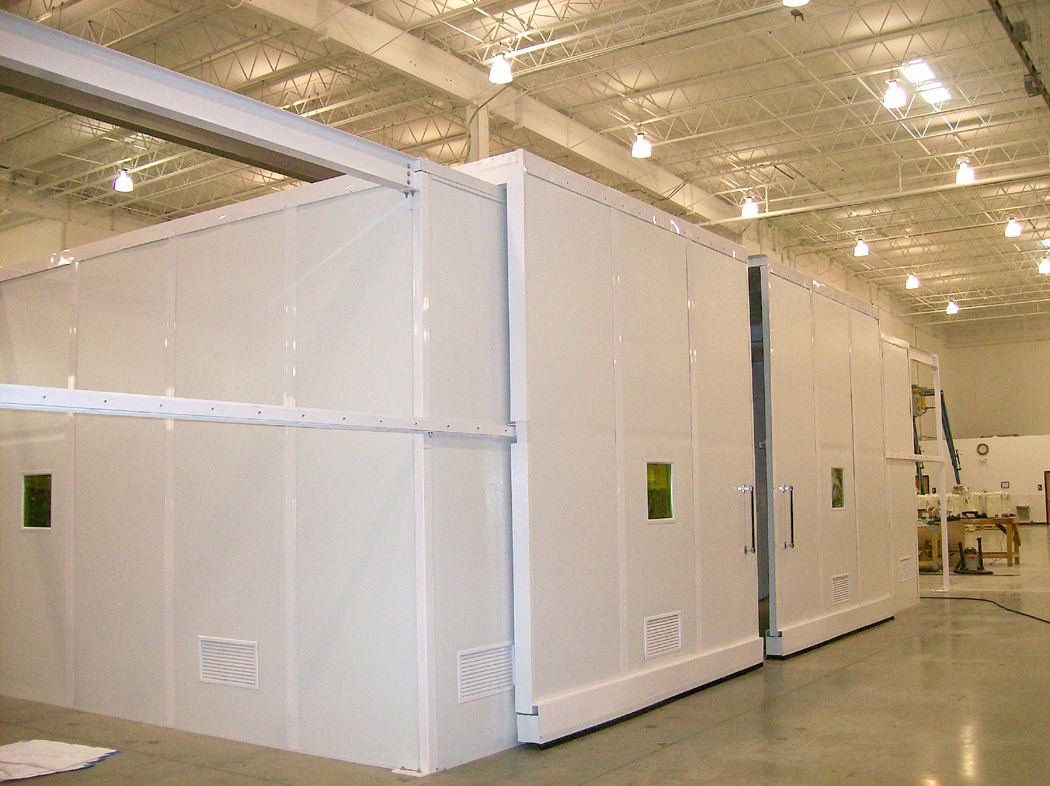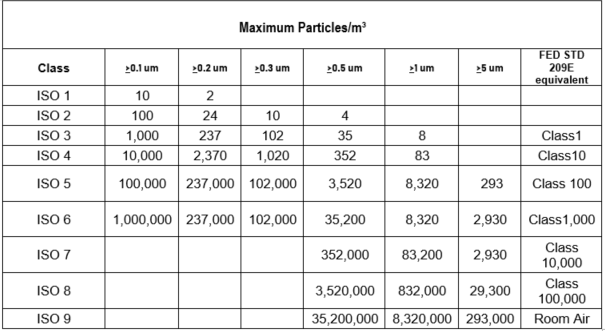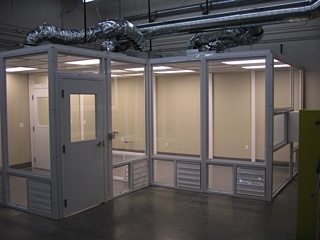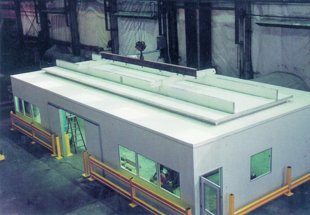What are Cleanroom Classifications?
Blog
 A cleanroom environment can be required in a variety of manufacturing, scientific, and medical environments. For instance, in the aerospace industry, there are certain manufacturers that make very intricate parts for airplanes. These parts may be used in the engine, flight controls, hydraulics, etc. However, since these systems are relied upon to keep a giant piece-of-metal in the sky, the parts that make up these systems have to be absolutely perfect. Therefore, they use a highly controlled environment to manufacture these parts. Cleanrooms offer a solution to this problem by controlling the size and number of particles that are in this work environment.
A cleanroom environment can be required in a variety of manufacturing, scientific, and medical environments. For instance, in the aerospace industry, there are certain manufacturers that make very intricate parts for airplanes. These parts may be used in the engine, flight controls, hydraulics, etc. However, since these systems are relied upon to keep a giant piece-of-metal in the sky, the parts that make up these systems have to be absolutely perfect. Therefore, they use a highly controlled environment to manufacture these parts. Cleanrooms offer a solution to this problem by controlling the size and number of particles that are in this work environment.
Similarly, pharmaceutical companies require a highly controlled environment when manufacturing and packaging their medicine. However, these cleanrooms might require an even more strict environment due to FDA requirements. So, in order to help determine how “controlled” a cleanroom environment is/needs to be ISO (International Organization for Standardization) has developed cleanroom classifications.
Get a Cleanroom Quote Today!
Cleanroom Classification Basics
 Ultimately, it is not too hard to conceptualize ISO cleanroom classifications and how they are organized. The gist of it is that the environment will allow X number of particles in a given cubic space of air. The fewer the particles in that given space, the higher the class of cleanroom. These particles can be a variety of different pollutants such as vapors, microbes, or aerosol particles. The higher the class of the cleanroom, the less risk of contamination.
Now let’s take a look at the specifics of cleanroom classification. ISO cleanroom classifications range from ISO 1 to ISO 9 with ISO 1 being the cleanest and ISO 9 being the least clean. These classifications organized based on a logarithmic scale, meaning that each increase in class will increase the maximum allowable particles in the air by a factor of 10. For example, ISO 1 is the most strict and highest controlled cleanroom environment available. In an ISO 1 cleanroom, there can be no more than 10 particles (of a size less than or equal to .1 micrometers) in a cubic meter. For the next level, ISO 2, there can be no more than 100 particles (of a size less than or equal to .1 micrometers) in a cubic meter, and so on.
However, the ISO cleanroom classifications also account for various sizes of the particles in the environment. As another example, an ISO 1 cleanroom can only have 2 particles less than or equal to .2 micrometers in a cubic meter. However, there are no particles larger than .2 micrometers allowed in the environment or else it would lose its ISO 1 status. Below is a chart detailing the various levels of ISO cleanrooms and their US FED STD 209E equivalent.
Ultimately, it is not too hard to conceptualize ISO cleanroom classifications and how they are organized. The gist of it is that the environment will allow X number of particles in a given cubic space of air. The fewer the particles in that given space, the higher the class of cleanroom. These particles can be a variety of different pollutants such as vapors, microbes, or aerosol particles. The higher the class of the cleanroom, the less risk of contamination.
Now let’s take a look at the specifics of cleanroom classification. ISO cleanroom classifications range from ISO 1 to ISO 9 with ISO 1 being the cleanest and ISO 9 being the least clean. These classifications organized based on a logarithmic scale, meaning that each increase in class will increase the maximum allowable particles in the air by a factor of 10. For example, ISO 1 is the most strict and highest controlled cleanroom environment available. In an ISO 1 cleanroom, there can be no more than 10 particles (of a size less than or equal to .1 micrometers) in a cubic meter. For the next level, ISO 2, there can be no more than 100 particles (of a size less than or equal to .1 micrometers) in a cubic meter, and so on.
However, the ISO cleanroom classifications also account for various sizes of the particles in the environment. As another example, an ISO 1 cleanroom can only have 2 particles less than or equal to .2 micrometers in a cubic meter. However, there are no particles larger than .2 micrometers allowed in the environment or else it would lose its ISO 1 status. Below is a chart detailing the various levels of ISO cleanrooms and their US FED STD 209E equivalent.

How Clean is It?
To better understand the variance from level to level, let’s walk through a couple of examples of what type of cleanroom would be used for a particular application.
 ISO 8 / Class 100,000 Cleanroom
ISO 8 / Class 100,000 Cleanroom
This level of cleanroom offers a lower level of contamination protection but still leaps ahead of standard room air. Typically, this type of cleanroom will be utilized in food and drug product packaging or can be used in the manufacturing of certain devices. Because pharmaceutical packagers have to meet certain standards for the way the drugs are contained, a cleanroom environment is oftentimes required.
ISO 7 / Class 10,000 Cleanroom
This level of cleanroom can often be seen in the medical field. For example, the handling of cytotoxic drugs (chemotherapy drugs) requires special equipment and a controlled environment. A controlled cleanroom environment like a Class 10,000/ ISO 7 allows technicians to reliably test these drugs in their liquid form to ensure that they have not expired and will be able to live up to their full shelf-life. ISO 6 / Class 1,000 Cleanroom
ISO 6 / Class 1,000 Cleanroom
ISO 6 cleanrooms begin to start reaching the levels of contamination control necessary in scientific research environments. When inside a cleanroom with high contamination standards, occupants inside the cleanroom will be required to wear clothing specifically designed to keep particles from coming off the person’s body and introducing new particles to the cleanroom environment. Any fabric or contaminant could potentially cause an error in research, potentially causing the research to be scrapped altogether.
ISO 5 / Class 100 Cleanroom (and higher)
ISO 5 cleanrooms and up are typically utilized in high quality, high precision manufacturing environments. The manufacturing of electronics takes an incredibly clean environment. This type of area would require the workers to completely decontaminate themselves in what is known as a gown room and only then be able to enter the cleanroom area. Also, a strict set of protocols and decontamination routines are put in place to keep the environment in its particular ISO classification level.